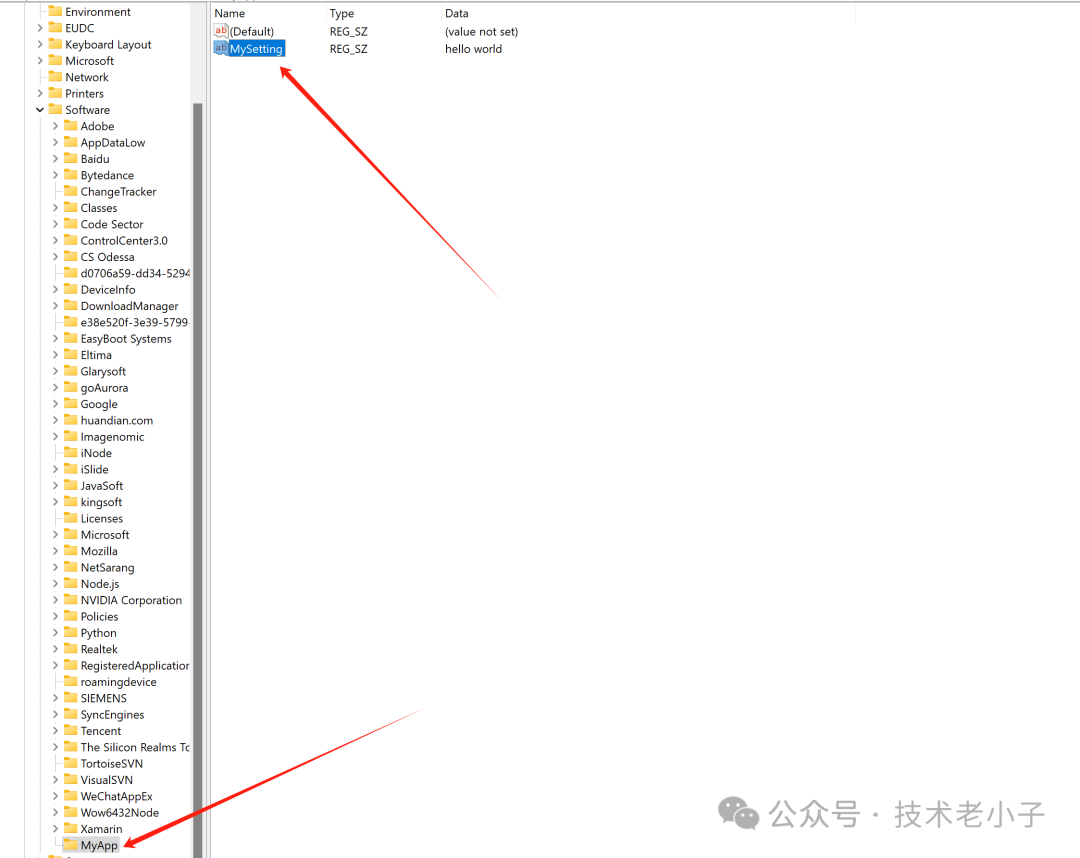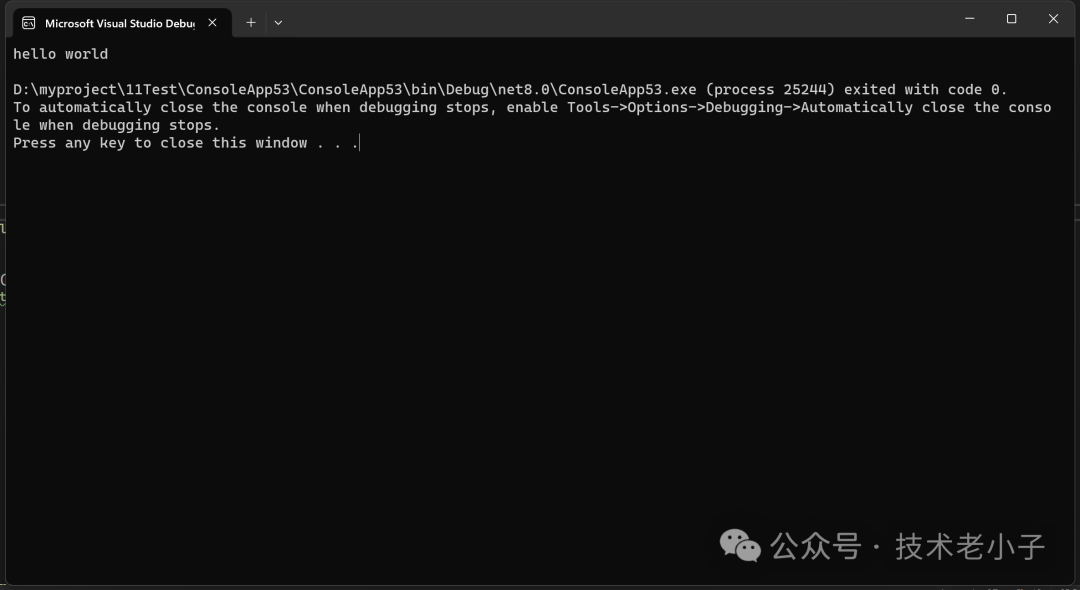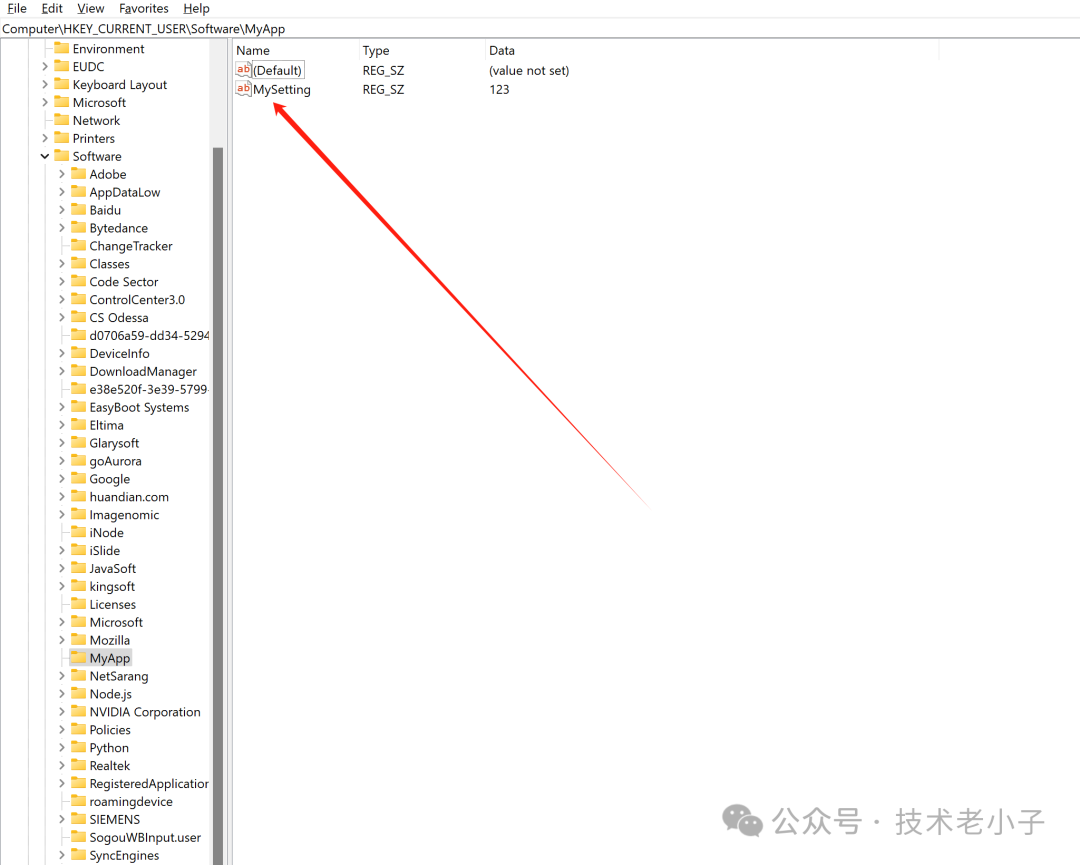在C#中,我們可以使用Windows Win32 API來對系統注冊表進行操作。注冊表是Windows操作系統中用來存儲配置信息的重要數據庫,我們可以通過C#來讀取、寫入和刪除注冊表中的鍵和值。
下面是一些使用C#調用系統Windows Win32 API注冊表操作的示例:
讀取注冊表鍵值
RegOpenKeyEx
用于打開指定的注冊表鍵。它的參數說明如下:
hKey:指定要打開的注冊表鍵的句柄。可以是以下值之一:
lpSubKey:要打開的注冊表鍵的名稱。例如:"SOFTWARE\MyApp"。
ulOptions:保留參數,通常設置為0。
samDesired:指定打開注冊表鍵的訪問權限和選項。可以是以下值之一或它們的組合:
KEY_READ(只讀)
KEY_WRITE(寫入)
KEY_ALL_ACCESS(完全訪問權限)
phkResult:用于接收打開的注冊表鍵的句柄。
函數返回值為整型,表示操作的結果。
RegQueryValueEx
用于檢索指定注冊表鍵的值。它的參數說明如下:
hKey:指定要查詢的注冊表鍵的句柄。
lpValueName:要查詢的注冊表值的名稱。
lpReserved:保留參數,通常設置為0。
lpType:用于接收鍵值數據的類型。例如,REG_SZ、REG_DWORD等。
lpData:用于接收鍵值數據的緩沖區的指針。
lpcbData:指定lpData緩沖區的大小,以字節為單位。在調用函數之前,它指定lpData緩沖區的大小。在函數返回時,它包含實際寫入lpData緩沖區的字節數。
函數返回值為整型,表示操作的結果。
using System;using Microsoft.Win32.SafeHandles;using System.Runtime.InteropServices;
class Program{ // 定義Win32 API函數 [DllImport("advapi32.dll", CharSet = CharSet.Unicode, SetLastError = true)] public static extern int RegOpenKeyEx( IntPtr hKey, string lpSubKey, int ulOptions, int samDesired, out IntPtr phkResult);
[DllImport("advapi32.dll", CharSet = CharSet.Unicode, SetLastError = true)] public static extern int RegQueryValueEx( IntPtr hKey, string lpValueName, int lpReserved, out uint lpType, IntPtr lpData, ref uint lpcbData);
static void Main() { IntPtr hKey; IntPtr phkResult; uint lpType; uint lpcbData = 1024; IntPtr lpData = Marshal.AllocHGlobal((int)lpcbData);
// 打開注冊表鍵 int result = RegOpenKeyEx( new IntPtr((int)RegistryHive.CurrentUser), "SOFTWARE\\MyApp", 0, 0x20019, // KEY_READ out phkResult );
// 讀取鍵值 result = RegQueryValueEx( phkResult, "MySetting", 0, out lpType, lpData, ref lpcbData );
string value = Marshal.PtrToStringUni(lpData);
// 輸出鍵值 Console.WriteLine(value);
// 釋放內存 Marshal.FreeHGlobal(lpData);
// 關閉注冊表鍵 SafeRegistryHandle safeHandle = new SafeRegistryHandle(phkResult, true); safeHandle.Dispose(); }}
讀取之前需要先創建一個Key


寫入注冊表鍵值
RegSetValueEx
用于設置指定注冊表鍵的值。它的參數說明如下:
hKey:指定要設置值的注冊表鍵的句柄。
lpValueName:要設置的注冊表值的名稱。
reserved:保留參數,通常設置為0。
dwType:指定要設置的值的數據類型。可以是以下值之一:
REG_SZ:字符串類型
REG_DWORD:雙字類型
REG_BINARY:二進制數據類型
REG_MULTI_SZ:多字符串類型
等等
lpData:指向包含要設置的值的數據的緩沖區的指針。
cbData:指定lpData緩沖區的大小,以字節為單位。
函數返回值為整型,表示操作的結果。
using System;using Microsoft.Win32.SafeHandles;using System.Runtime.InteropServices;
class Program{ // 定義Win32 API函數 [DllImport("advapi32.dll", CharSet = CharSet.Unicode, SetLastError = true)] public static extern int RegCreateKeyEx( IntPtr hKey, string lpSubKey, int reserved, string lpClass, int dwOptions, int samDesired, IntPtr lpSecurityAttributes, out IntPtr phkResult, out int lpdwDisposition);
[DllImport("advapi32.dll", CharSet = CharSet.Unicode, SetLastError = true)] public static extern int RegSetValueEx( IntPtr hKey, string lpValueName, int reserved, int dwType, string lpData, int cbData);
static void Main() { IntPtr hKey; IntPtr phkResult; int lpdwDisposition;
// 創建或打開注冊表鍵 int result = RegCreateKeyEx( new IntPtr((int)RegistryHive.CurrentUser), "SOFTWARE\\MyApp", 0, null, 0, 0x20006, // KEY_WRITE IntPtr.Zero, out phkResult, out lpdwDisposition );
// 寫入鍵值 result = RegSetValueEx( phkResult, "MySetting", 0, 1, // REG_SZ "123", 6 );
// 關閉注冊表鍵 SafeRegistryHandle safeHandle = new SafeRegistryHandle(phkResult, true); safeHandle.Dispose(); }}

刪除注冊表鍵值
class Program{ // 定義Win32 API函數 [DllImport("advapi32.dll", CharSet = CharSet.Unicode, SetLastError = true)] public static extern int RegOpenKeyEx( IntPtr hKey, string lpSubKey, int ulOptions, int samDesired, out IntPtr phkResult);
// 定義Win32 API函數 [DllImport("advapi32.dll", CharSet = CharSet.Unicode, SetLastError = true)] public static extern int RegDeleteValue( IntPtr hKey, string lpValueName);
static void Main() { IntPtr hKey; IntPtr phkResult;
// 打開注冊表鍵 int result = RegOpenKeyEx( new IntPtr((int)RegistryHive.CurrentUser), "SOFTWARE\\MyApp", 0, 0x20006, // KEY_WRITE out phkResult );
// 刪除鍵值 result = RegDeleteValue( phkResult, "MySetting" );
// 關閉注冊表鍵 SafeRegistryHandle safeHandle = new SafeRegistryHandle(phkResult, true); safeHandle.Dispose(); }}
刪除注冊表鍵
class Program{ // 定義Win32 API函數 [DllImport("advapi32.dll", CharSet = CharSet.Unicode, SetLastError = true)] public static extern int RegOpenKeyEx( IntPtr hKey, string lpSubKey, int ulOptions, int samDesired, out IntPtr phkResult);
// 定義Win32 API函數 [DllImport("advapi32.dll", CharSet = CharSet.Unicode, SetLastError = true)] public static extern int RegDeleteKey( IntPtr hKey, string lpSubKey);
static void Main() { IntPtr hKey; IntPtr phkResult;
// 打開注冊表鍵 int result = RegOpenKeyEx( new IntPtr((int)RegistryHive.CurrentUser), "SOFTWARE", 0, 0x20019, // KEY_READ out phkResult );
// 刪除注冊表鍵 result = RegDeleteKey( phkResult, "MyApp" );
// 關閉注冊表鍵 SafeRegistryHandle safeHandle = new SafeRegistryHandle(phkResult, true); safeHandle.Dispose(); }}
通過以上示例,我們可以看到如何使用C#調用系統Windows Win32 API注冊表操作。需要注意的是,對注冊表的操作需要謹慎,不當的操作可能會導致系統故障,建議在操作注冊表時謹慎處理。
該文章在 2024/11/15 11:40:21 編輯過